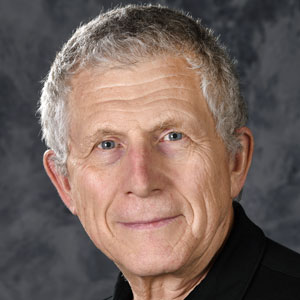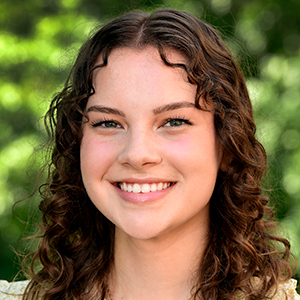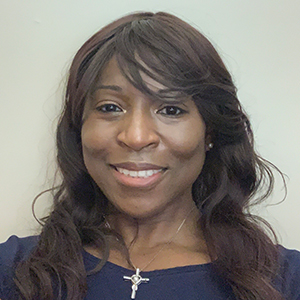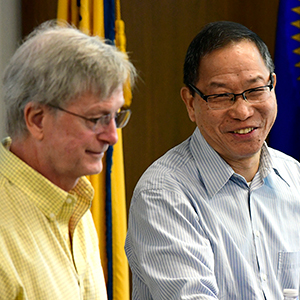 In 2019, Arana helped to organize a symposium honoring the research accomplishments of Kunkel, her mentor at NIEHS. (Photo courtesy of Steve McCaw)
In 2019, Arana helped to organize a symposium honoring the research accomplishments of Kunkel, her mentor at NIEHS. (Photo courtesy of Steve McCaw)Mercedes Arana, Ph.D., a biologist in the NIEHS DNA Replication Fidelity Group, recently spoke with the Environmental Factor about her career path, as part of an interview celebrating National Hispanic Heritage Month (see first sidebar). Arana, a first-generation college student from Miami, Florida, described how she overcame family tragedy and other life obstacles to eventually earn her doctoral degree and join the institute in 2004.
EF: You started at NIEHS as a postdoctoral fellow and were promoted to biologist in 2009. Can you talk about your day-to-day work at the institute?
Arana: Sure, thank you. I wear two hats — I am a bench scientist and the manager of our lab, the DNA Replication Fidelity Group, led by Thomas Kunkel, Ph.D. Our focus is DNA replication, which occurs when DNA is copied during cell division. Errors can result in gene mutations that may make individuals more susceptible to cancer and other diseases.
One project I’m working on now is a collaboration with Scott Williams, Ph.D., deputy chief of the institute’s Genome Integrity and Structural Biology Laboratory. We are using baker’s yeast to study a mutant DNA ligase and better understand its role in maintaining genome integrity. A ligase is an enzyme that joins DNA strands together during DNA replication, repair, and recombination processes.
EF: You earned your Ph.D. in biochemistry and molecular biology from the University of Miami. What spurred your interest in science?
Arana: In high school, I thought I would eventually go to law school because I had a strong background in language. I was taking Italian and French in addition to already speaking English and Spanish, which is my first language.
But during my senior year, I took an Advanced Placement science class, and it blew my mind. I became fascinated by various biological processes, such as reproduction and cell division. By the time I started college at Florida State University, I had decided to major in biology.
EF: What happened after college?
Arana: I went back to Miami, which is where I was raised, and I worked as a research assistant for seven years in the microbiology department at the University of Miami medical school.
One project involved studying a cohort of HIV [human immunodeficiency virus] patients, which was exciting research at that time, the early 1990s. My job was to follow the patients over time and see whether there were changes in levels of other infections, such as herpes simplex virus [HSV]. As serendipity would have it, in graduate school I examined the biochemistry of HSV-1, looking at the different proteins involved in replication of the virus.
I enjoyed living with my husband, who also is a scientist, in South Beach, but we needed to find a place where we realistically could both find jobs in our fields, and we started looking in the Research Triangle Park, North Carolina, area. After finishing my Ph.D. in 2004, I joined NIEHS.
EF: What do you think is the most rewarding part of your work?
Arana: I try to use my platform as a minority researcher to bring excitement about environmental health science to the local community, especially to kids who may not otherwise have many educational opportunities [see second sidebar]. I think it is valuable if they maybe see someone who looks like them and say, “Hey, if she can do it, maybe I can, too.”
I grew up in a not-great part of town, and we didn’t have much as a family. I lost my Dad early on, and my grandparents supported my mother by helping to raise me.
They didn’t speak English, and I didn’t have anybody to help me with homework or read to me, things that parents typically do. I’ll never forget my first week of kindergarten, when I wanted to leave the classroom and go back home because I couldn’t understand what the teachers were telling me.
Fortunately, I had the drive to learn, and a strong work ethic. But there also were people along the way who pushed me to achieve big goals, and I know that many others may need the same push.
Citation: Arana ME, Seki M, Wood RD, Rogozin IB, Kunkel TA. 2008. Low-fidelity DNA synthesis by human DNA polymerase theta. Nucleic Acids Res 36(11):3847–3856.









